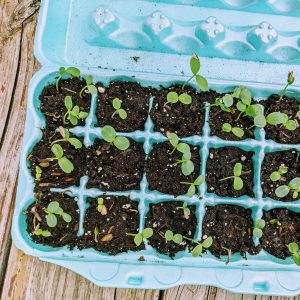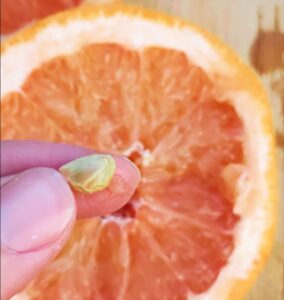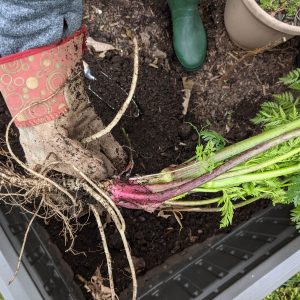Why Do Plants Wilt? 5 Main Reasons for Droopy Plants
Finding plants wilting in your garden gives cause for concern. Why do plants wilt and what can you do about it? Different circumstances may cause foliage to become droopy. Sometimes the solution is as simple as a good watering while other times your plants may have bigger problems to tackle.
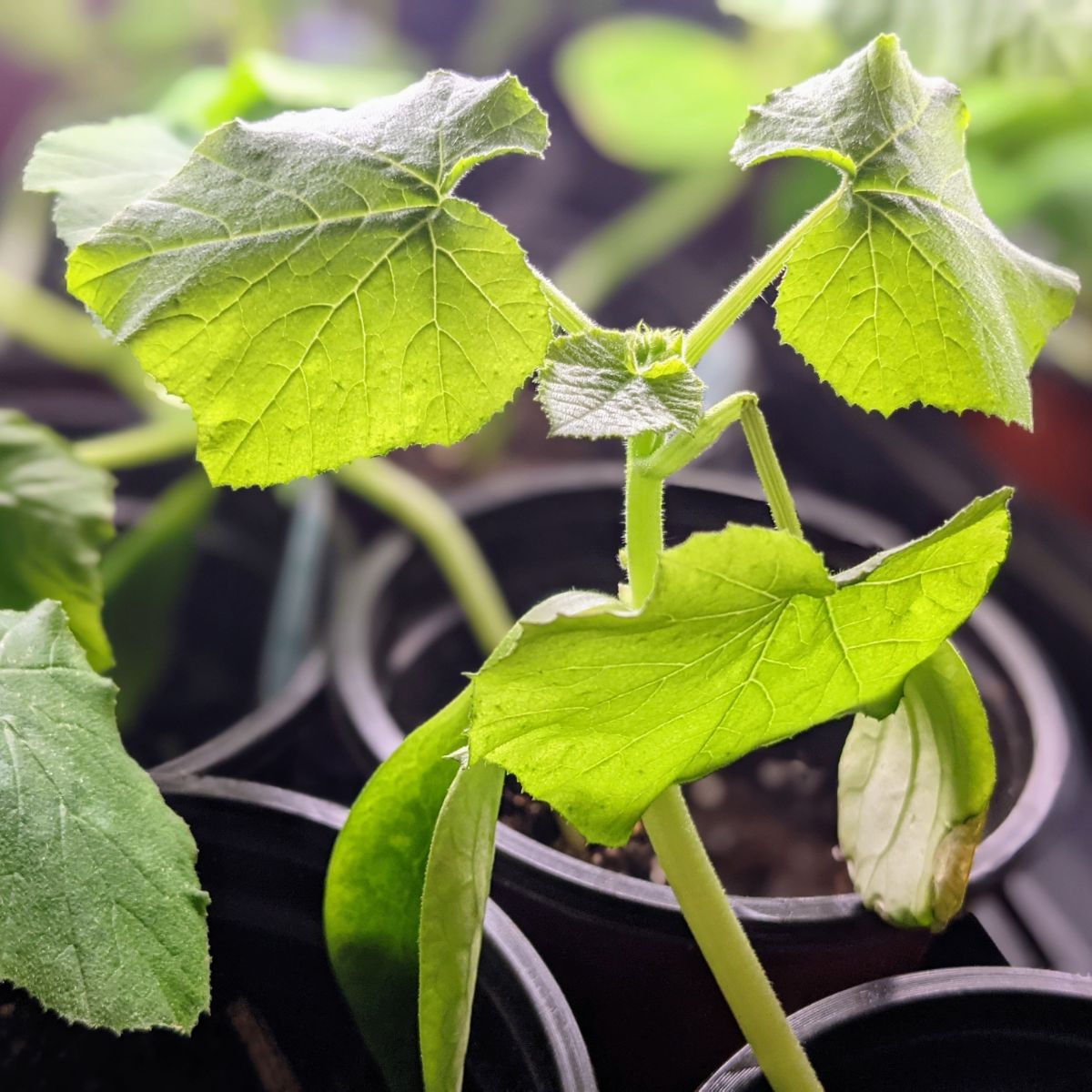
According to the University of Maryland Extension, plants wilt when their roots can’t bring water up to the leaves. This occurs when little to no moisture content exists in the soil, such as during a drought or when you haven’t watered in a while. Plants also wilt when the roots are waterlogged or beginning to rot from too much watering.
This is why it can be so frustrating and tricky sometimes to diagnose the reason why plants are wilting!
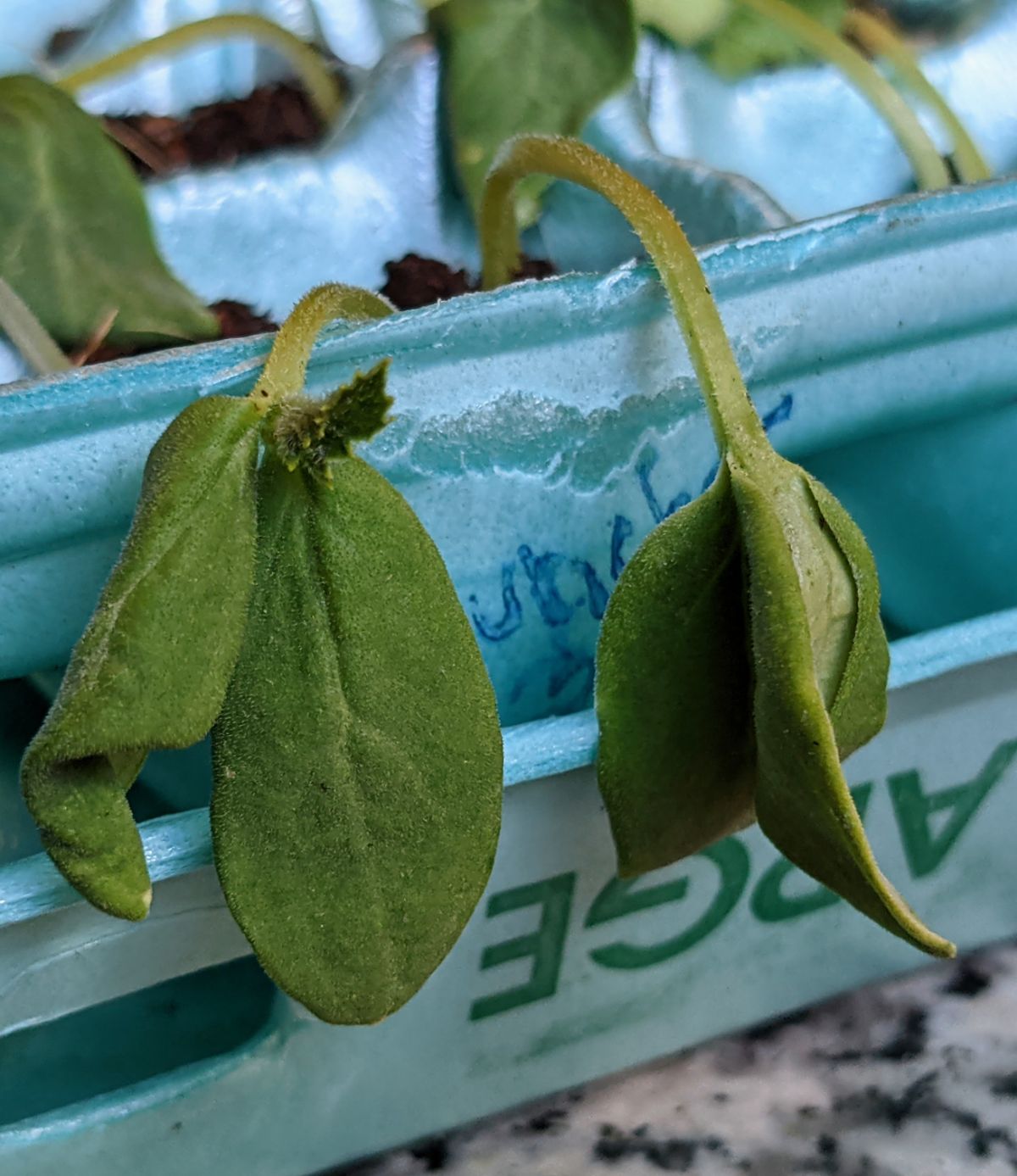
Too Little Water / Drought
Lack of proper watering commonly causes plants to wilt. When water content is too low in the soil, roots cannot bring the water up to the leaves, and they begin to wilt.
Water stress can show up quickly on outdoor plants during extremely hot days. You’ll likely see plant leaves drooping noticeably on a hot, sunny day if they aren’t watered adequately.
Indoor plants wilt as well, especially when their last watering was too long ago. Even seedlings wilt when they don’t get watered often enough.
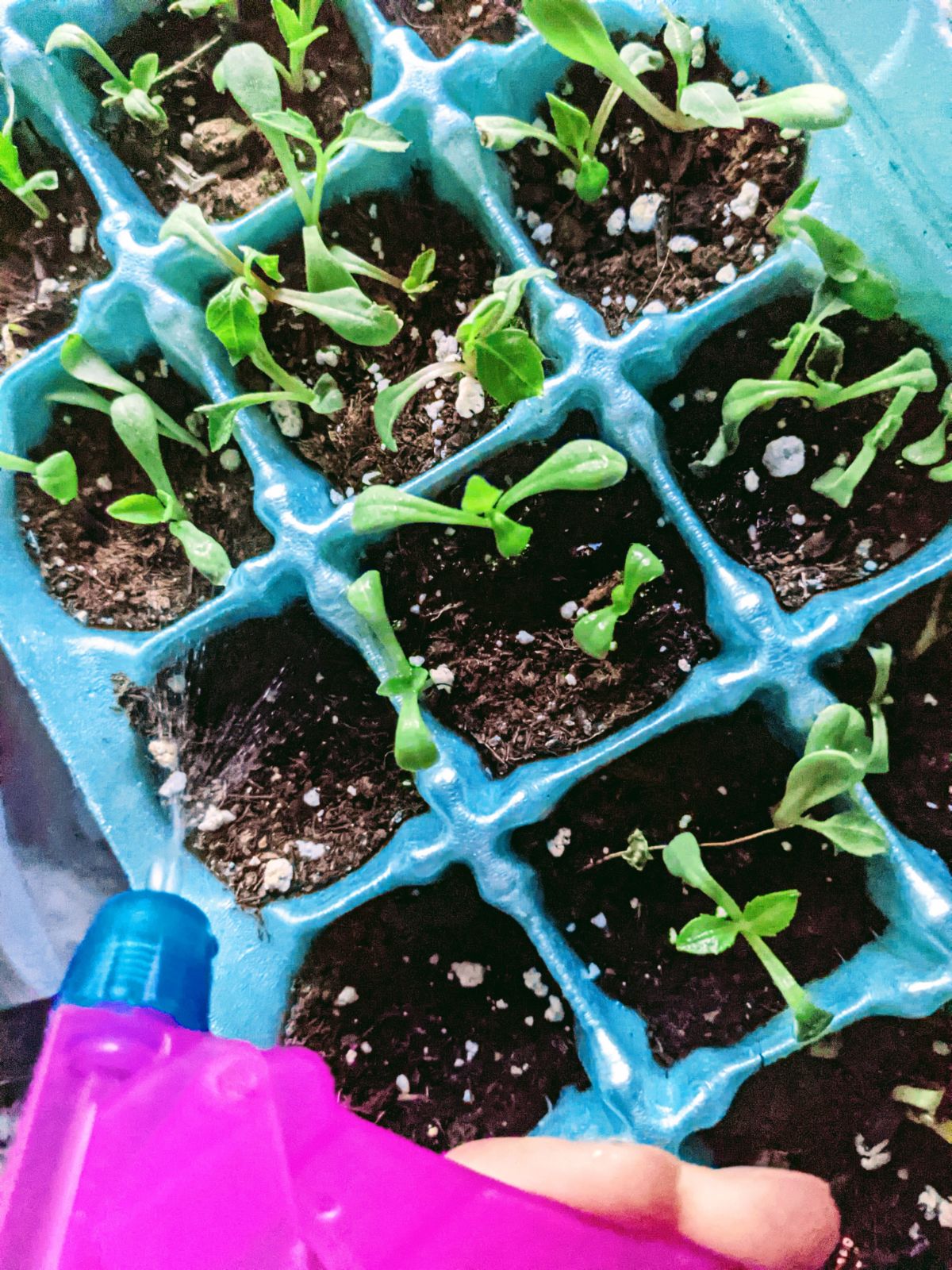
Plants like polka dot plant and African violets may show signs of distress through watering. In fact, I lost a polka dot plant after some watering miscommunications.
If conditions go uncorrected, your wilting plants may eventually die.
Too Much Water / Root Rot
When waterlogged, plants’ roots may not efficiently take water up from the soil. Their roots may suffer from root rot, a disease where the roots deteriorate.
Poorly draining soils like clay become compacted tightly, preventing oxygen from reaching the roots. You may notice more wilting and yellowing when clay soil
According to New Mexico State University College of Agricultural, Consumer, and Environmental Sciences, roots of plants have what’s called a Casparian strip as part of their anatomy. Shaped like a cylinder, this bit protects the plant from absorbing the wrong things, like salt.
The plant must use a process called respiration to get water over the strip and into the plant. Plant respiration requires oxygen in order for the plant to expend energy and absorb water.
In other worse, plants’ roots need oxygen to take up water. When immersed in water for too long, your plants can actually drown.
Keep a close eye to help prevent waterlogged, drowned plants.
Damaged Plants or Broken Stems
Oftentimes plants wilt when their stems become damaged. This happens regularly at big box stores or extensive garden centers where plants squish together on shelves or tables.
Plants may fall off tables or racks, breaking branches and stems on the ground. Those broken stems interrupt the water uptake passages and moisture no longer reaches the foliage.
Not only that, but husbands with weedwhackers also may be at the root of broken plants!
At least MINE is!!!
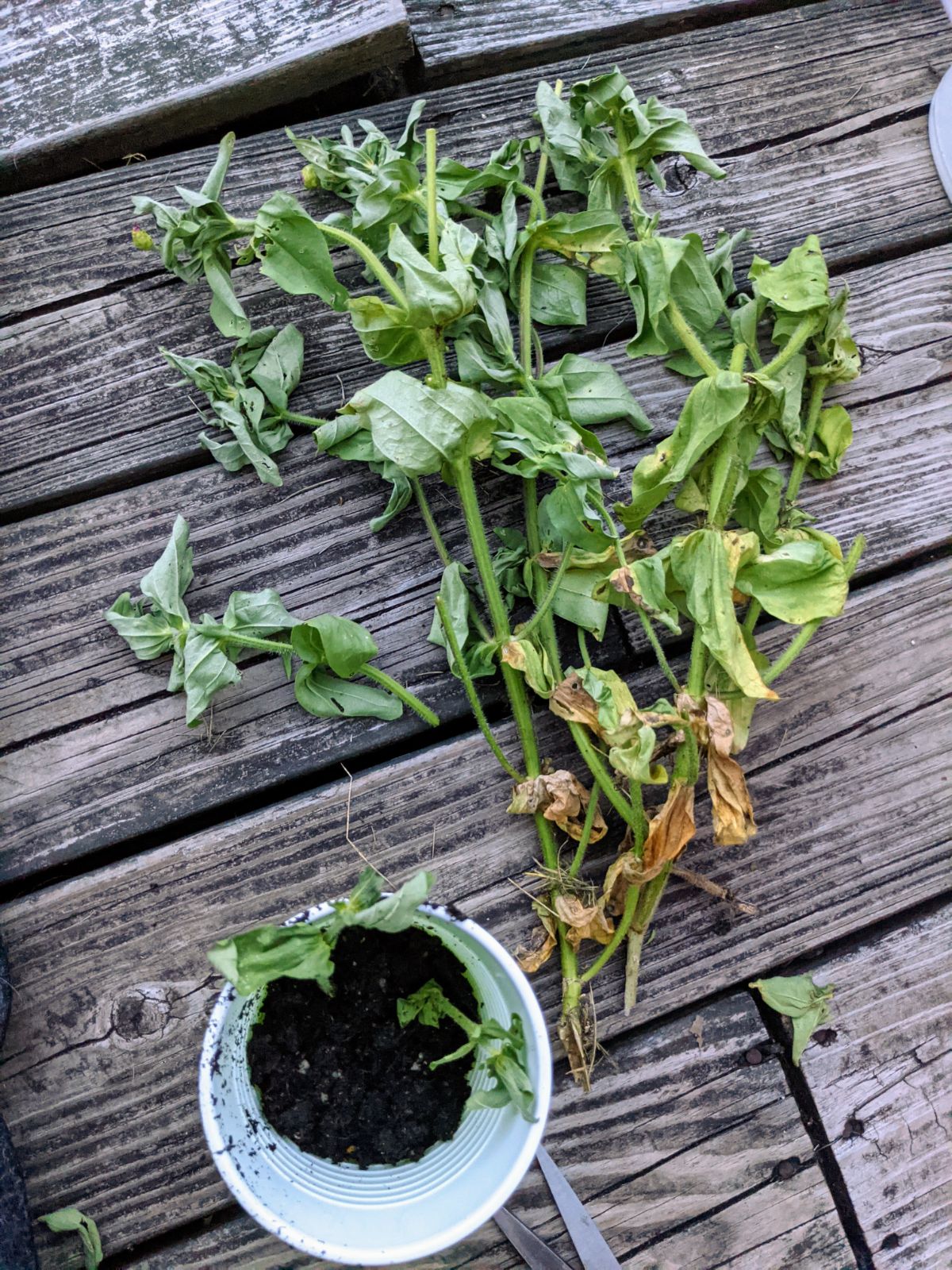
Broken stems cause wilting of the foliage connected to that stem or branch. Other parts of the plant may remain healthy and intact.
Simply prune away damaged foliage and broken stems to help the plant become heathier.
On another note, weak stems on leggy plants may result in bent stems. Those bent stems may not be fully lethal to the plant but can still restrict water uptake.
I’ve had success using masking tape to repair the stems, strengthening and supporting them in an upright position once again.
Sometimes I also attempt to propagate plants with broken stems. Might as well give it a whirl!
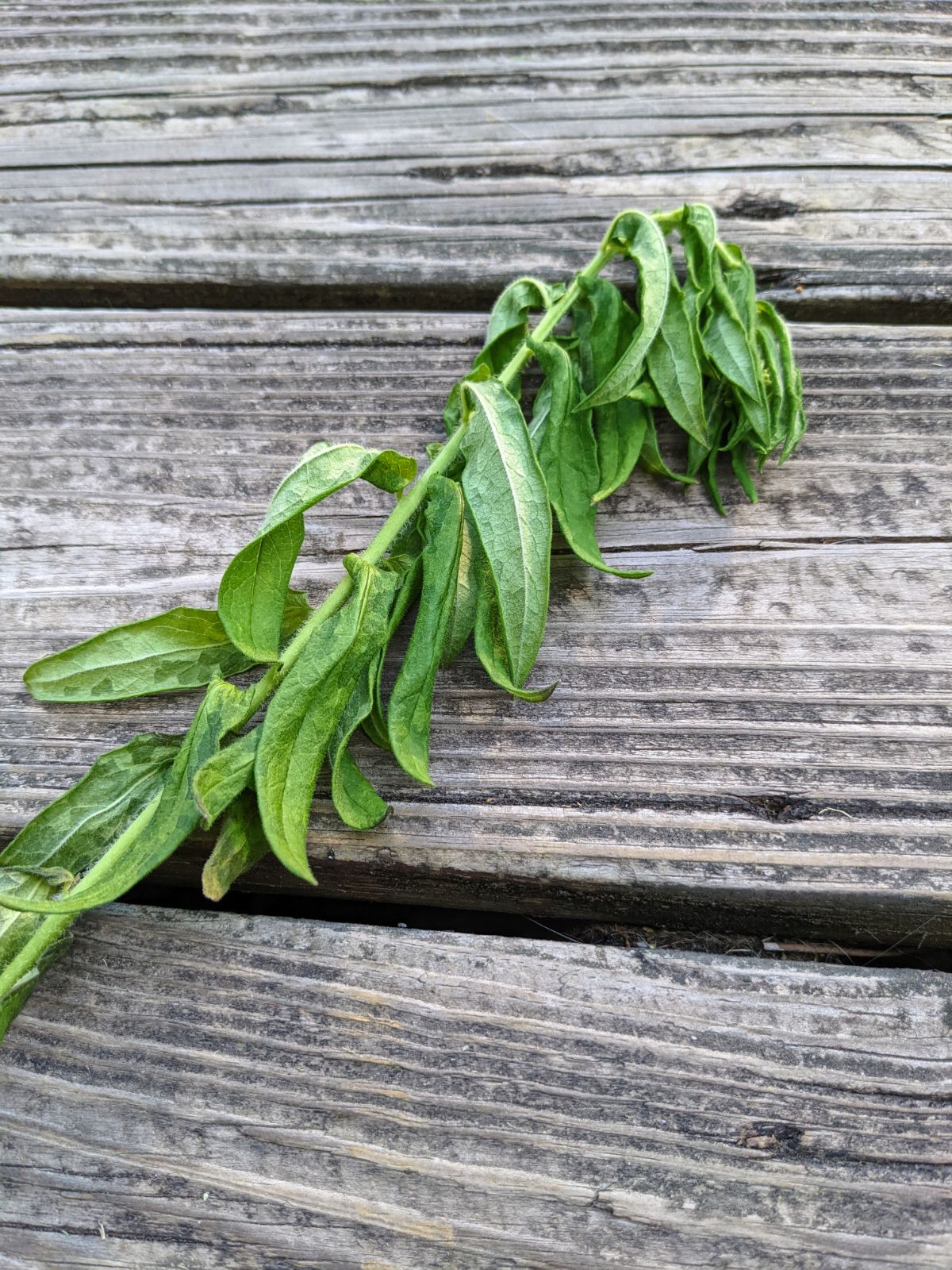
Wilting Due to Pest Problems
Sometimes plants wilt due to insect infestations. The dreaded vine borers are probably the greatest example of this. When the vine borer larvae hatch and bore into the stems of cucurbits, they disrupt the plant’s ability to quench its thirst.
The University of Minnesota Extension shares that plant wilting is the first noticeable symptom of vine borers on your plants. Other signs of borer attack include holes on the base of the vine and frass, which looks like rusty sawdust.
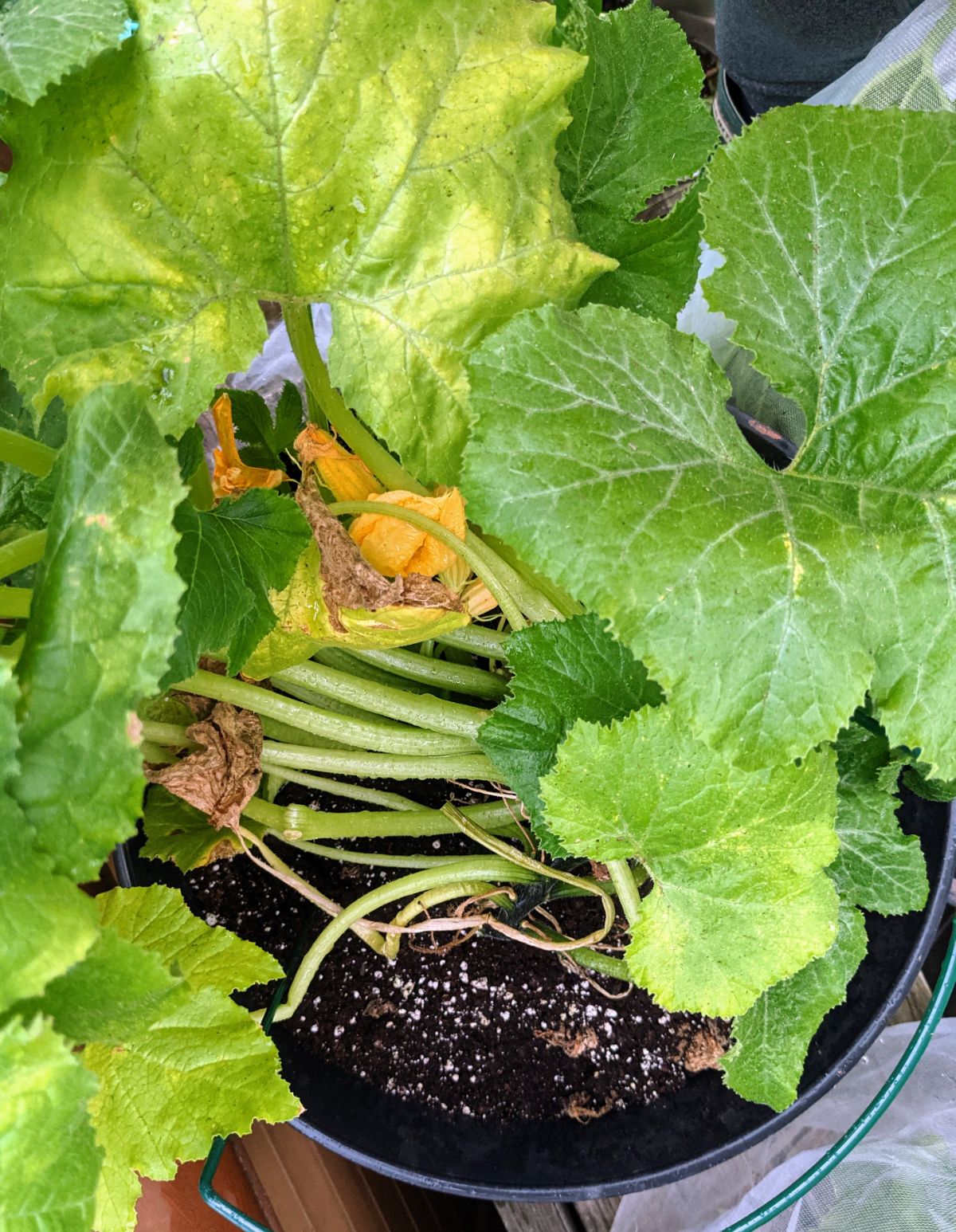
Timing of the vines wilting varies – you may notice it first on hot and sunny days. Once plants wilt during the mornings or in the shade, you may find a worse problem with the borer infestation.
Sometimes vine borer attacks are fatal. Other times, you may find that you can surgically remove the worms from the plants. Either way, prevention is usually the best option.
Bacterial Wilt
Another insect-borne issue, bacterial wilt comes from the garden pest known as cucumber beetles. These bad bugs spread the bacteria to their food source – cucurbit leaves.
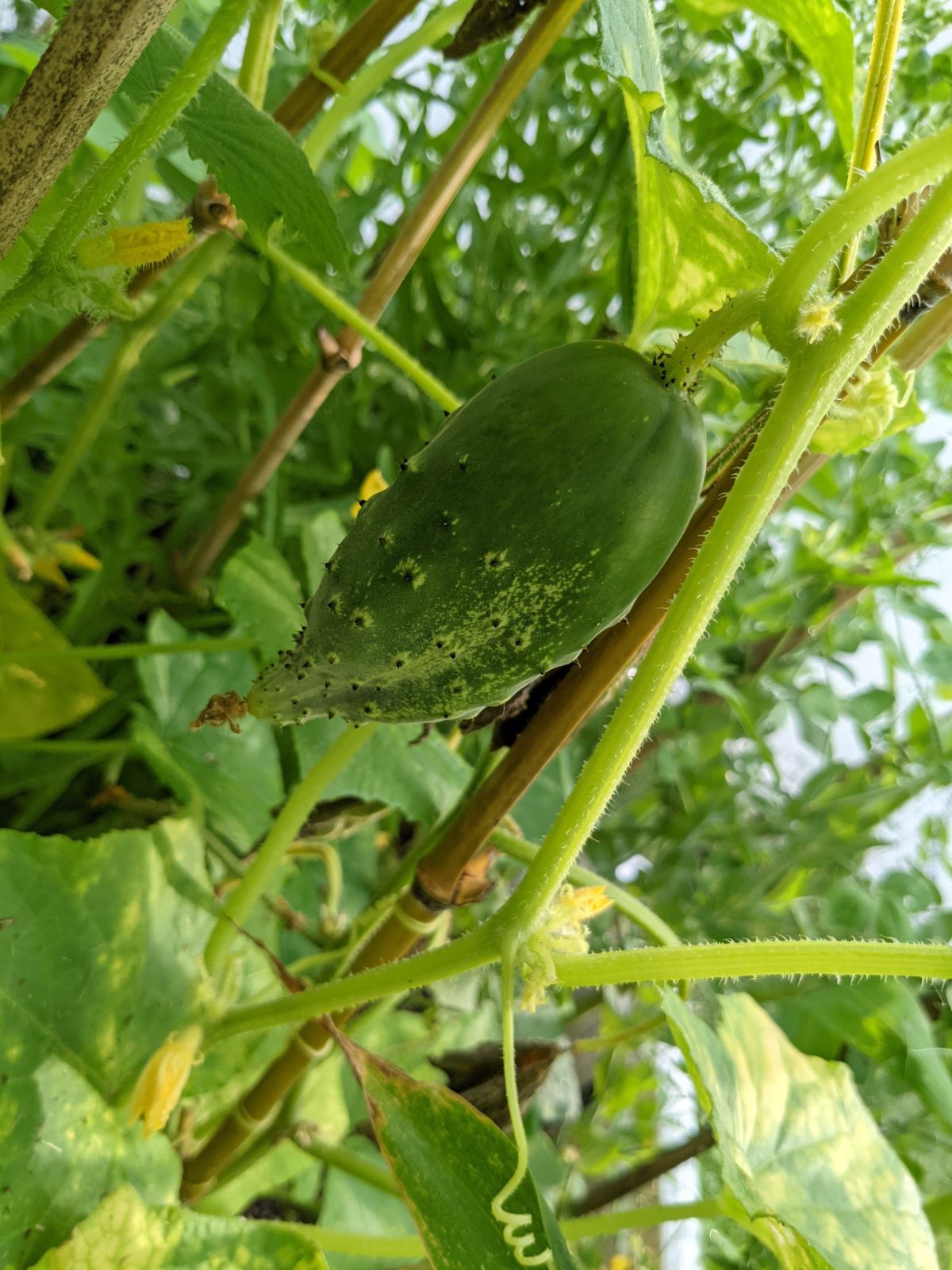
The University of Minnesota Extension reports that the bacteria originate in the guts of the spotted and striped cucumber beetles and transfers to the plants from their mouths when they eat. Cuts or wounds on the plants allow the bacteria to enter.
The way to know if the wilting of plants is due to bacterial wilt is largely based on seeing cucumber beetles or the timing of the wilting. The Minnesota Extension explains that plants afflicted with bacterial wilt generally look droopy in the daytime and recover overnight.
Bacterial wilt often results in the demise of your cucurbit plants. Pest management and prevention of cucumber beetles tend to work best. You may also have to remove affected plants to prevent spread.
Signs of Serious Wilting Problems
Often, your underwatered plants can recover from a short stint of wilting in between waterings. You can sometimes even rescue overwatered plants with a few tricks like swapping out the soil.
Wilting plants with the following symptoms may be in bigger trouble:
- Brown leaves
- Crispy leaves
- Yellow leaves
- Dropped leaves (leaf drop)
- Sunburn or leaf scorch
- Slowed growth
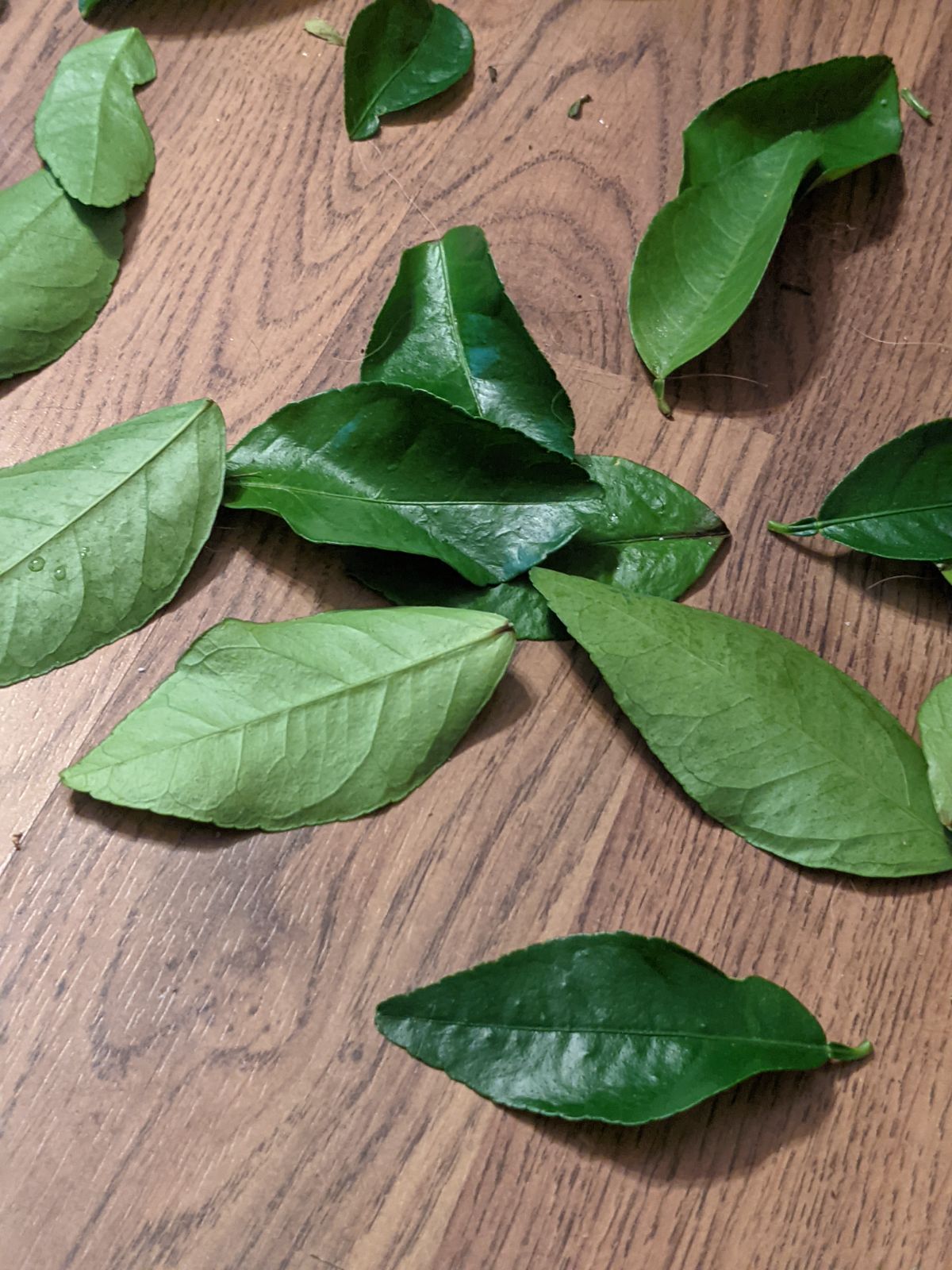
If water is withheld for too long, you may also notice problems with flowering or fruits forming on the plants.
You may even notice damaged flower buds if heat and drought become too intense for the plants.
How to Help Wilting Plants
If you find your plants wilting, try to identify the cause. What is the reason your plants are wilting?
Ask a few questions to help diagnose the issue, like:
- Have you watered them recently?
- Did it rain heavily this week?
- When was the last time it rained?
- Could it be a drought?
- Might they be thirsty?
Here are some ways to help wilting plants:
- Check the watering situation. Determine if they are suffering from too little water or too much water and correct it. Try steps to help underwatered plants or overwatered plants. For example, repot waterlogged plants in new soil.
- Look for signs of disease, fungus, or pest damage. If found, approach the issue with the appropriate response.
- Prune away some of the worst foliage. With fewer droopy leaves needing to bounce back, the recovery may be quicker.
- Offer shade when possible. In cases of drought and inadequate watering, move wilting potted plants into shade. This alleviates some of the stress so they can recover.
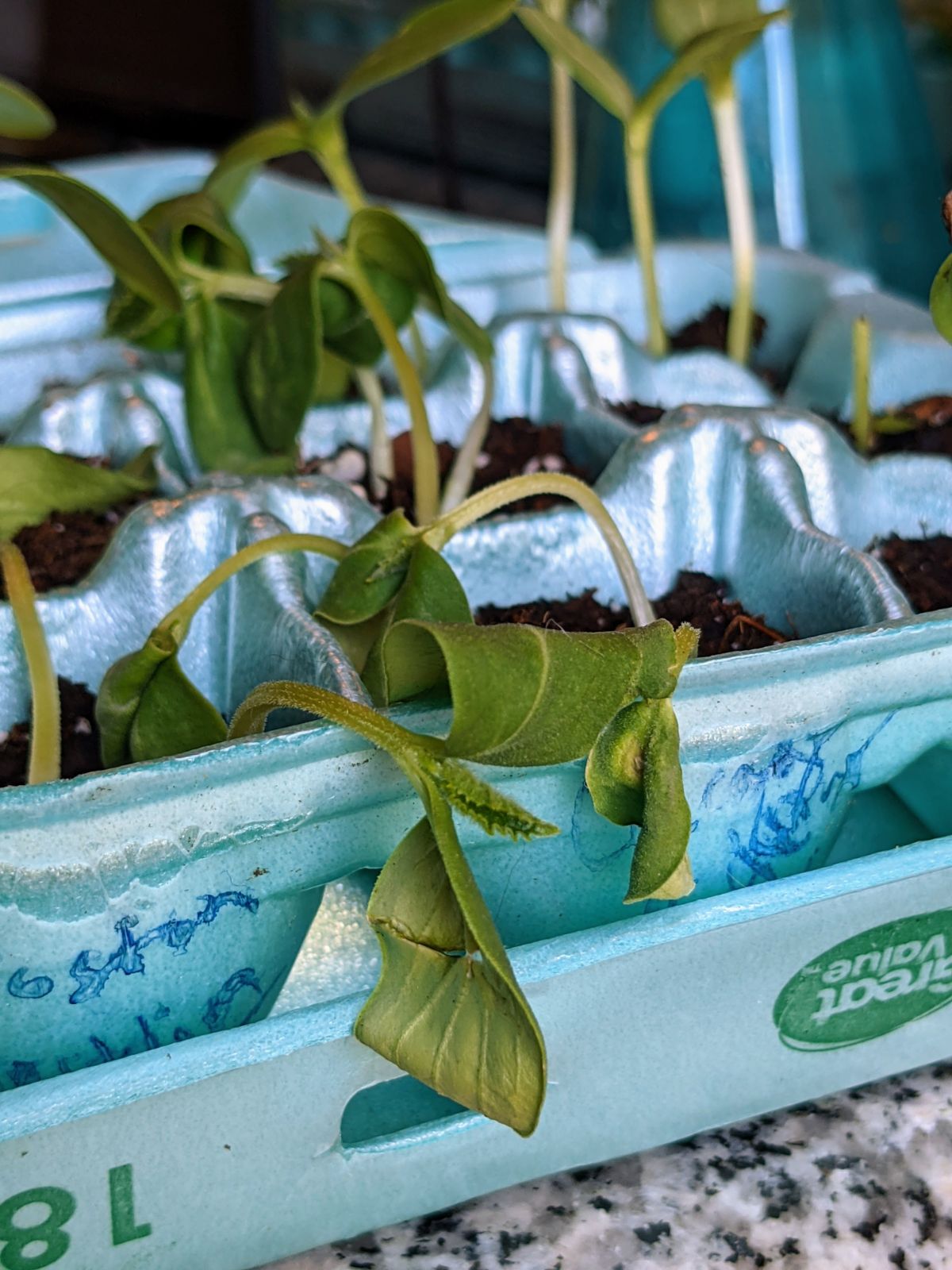
Simple Ways to Improve Watering for Plants
If you find it time consuming and exhausting to water all your plants and gardens, you are not alone!
Here are some easy ways to improve your watering process:
- Location – Locate your gardens or most prized plants closest to the hose or water access. Consider locating more drought-tolerant plants further from the water source. Make it easier on yourself!
- Automation – Try a hose timer and sprinkler system or other irrigation system to automate watering each day. It can save a ton of time! (With this in mind, you might be interested in my post on vacation watering tips!)
- Rain Gauge – Try using a rain gauge to monitor the amount of rainwater your plants are getting. You might also get an idea from any sprinkler systems you have set up.
Our website features affiliate links to products that we personally believe in. If you make a purchase from a link on our site, we may earn a small commission at no cost to you. Thank you! This helps our girls chase their garden dreams! Thanks for your support. (View full affiliate disclaimer at the end of the page.)
FAQ
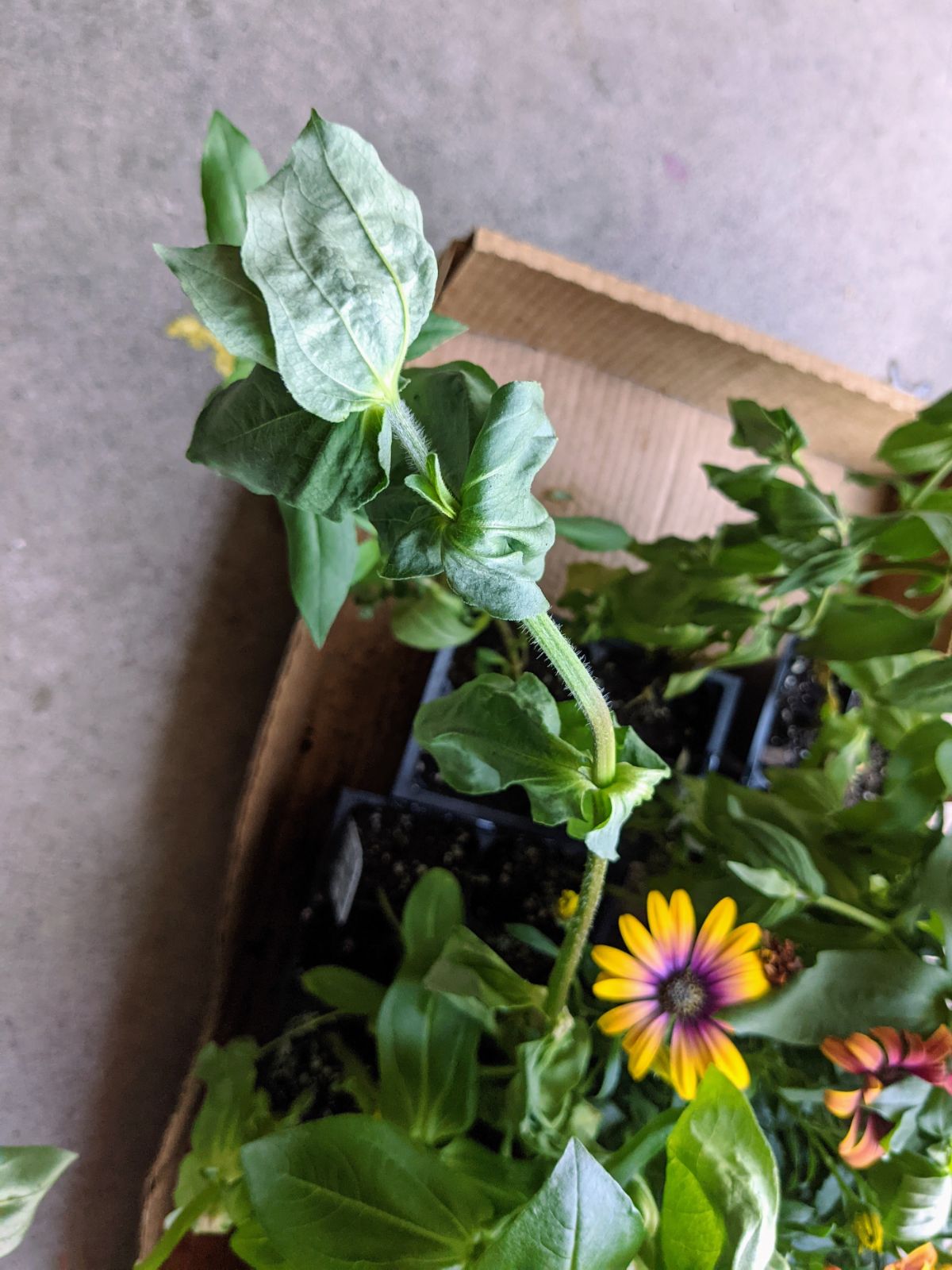
Save Your Droopy Plants!
I hope this helps to answer the question, Why do plants wilt, and hope you find some practical solutions you can try to improve the problem.
Do you have any stories to share about wilting plants or solutions you’ve tried? Feel free to share in the comments or ask any other questions you might have. We love hearing from you!
Happy Gardening!

